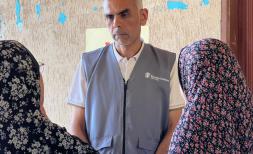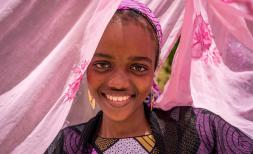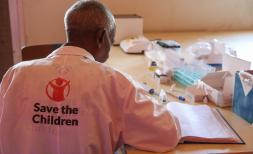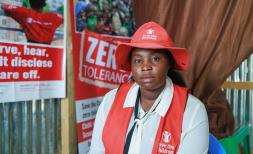Five ways the rights of children have progressed in the past 100 years
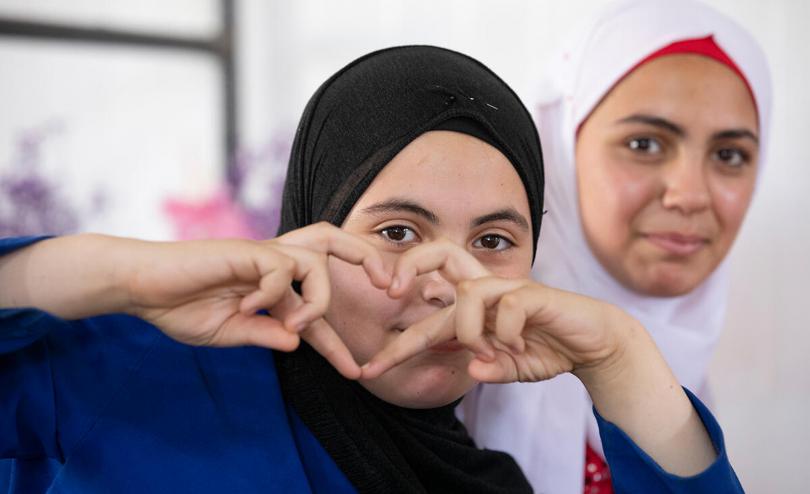
Alva, 13, makes a heart sign at a Girls Empowerment Centre in Zaatari Refugee Camp, Jordan. Kate Stanworth / Save the Children
Children’s lives have changed for the better in many ways in the 100 years since the international community endorsed the ground-breaking Geneva Declaration on the Rights of the Child but still today children continue to be denied their rights in many places.
Save the Children founder Eglantyne Jebb drafted the declaration adopted by the League of Nations on 26 September 1924 that officially stated for the first time that children were not the possessions of adults and deserved their own rights. It made clear that children had fundamental rights to education, protection in times of distress, food, and safety from exploitation.
Jebb’s declaration spurred a century of progress and transformed the lives of generations of children. However, today, children’s rights are under threat of being eroded and neglected with inequality growing due to escalating war and violence, the devastating impact of the climate crisis, poverty, and discrimination.
As a consequence, Save the Children’s mission to support children to claim their rights is just as urgent and relevant today as it was a century ago. At Save the Children, standing up for children’s rights is our history, present, and future.
Below are five ways in which children’s lives have improved since 1924 - as well as current trends that, in some cases, risk reversing their rights:
1. CHILD MORTALITY HAS FALLEN DRAMATICALLY
In 1924, one third of children died before their fifth birthday. As recently as 1950 – one in four children died globally before the age of five. Today, that probability has fallen to less than four in 100, with all regions of the world making progress, despite rates remaining high in several countries such as Somalia and South Sudan. [1]
The drastic reduction is due to changes such as better healthcare, including for newborns, better nutrition, cleaner water, vaccinations, medicines and fewer famines. Save the Children is proud to have been part of this progress. In Nepal, for example, our work contributed to the 2018 Public Health Service Act, which scaled up vaccination coverage, giving children nationwide the best chance of a healthy start in life.
Progress on reducing child mortality has however stalled in recent years, and it is predicted that 3.8 million children will still die before their fifth birthday in 2030.[2]
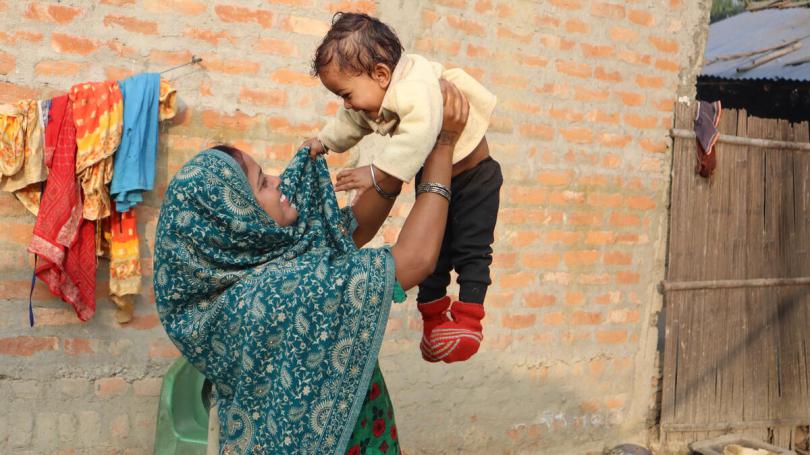
Araswati, 30, and her baby having a happy moment in Nepal. Save the Children.
2. MOST CHILDREN FINISH SCHOOL
Almost nine in 10 (88%) of primary, and six in 10 (59%) of upper-secondary-age school children now complete their education. This compares to 1924 when globally more than six in 10 people had no formal education at all.
Today access to education is seen as a fundamental right and in many places the government has a duty to provide it. In Zimbabwe our work contributed to the passing of the Education Amendment Act in 2020, which brought in changes including that pregnant students would not be excluded from school, and that no pupil would be kept out of school due to being unable to pay school fees.
Recently, challenges such as conflict and climate crises have threatened some of the progress made. Extreme weather events such as floods and heatwaves have seen schools close around the world affecting more than 400 million students since 2022 according to a recent World Bank analysis. [3] Even when schools can stay open, rising temperatures can affect children’s concentration.
There are also millions of children out of school in conflict zones, including over 18 million in Sudan and 625,000 – every school-age child - in Gaza.
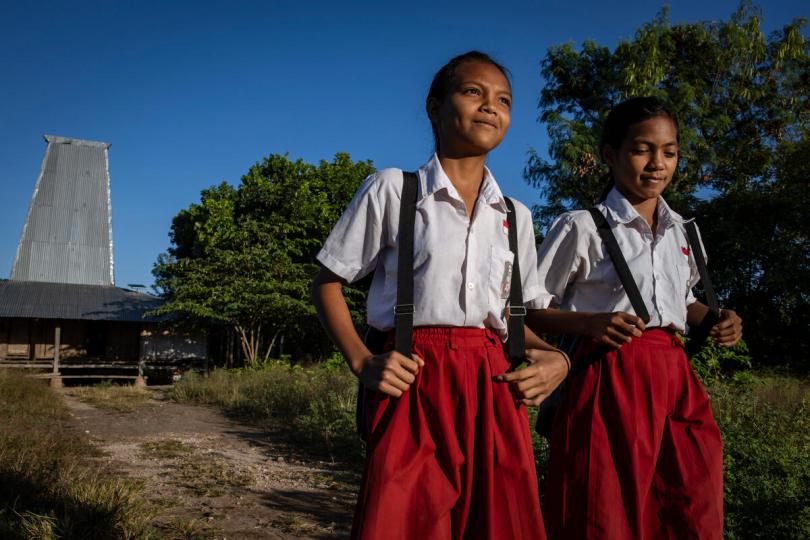
Cousins Atika and Dwi, both 12, walking to school in drought-affected East Sumba, Indonesia. Ulet Ifansasti / Save the Children
3. THE MAJORITY OF CHILDREN ARE NOT REQUIRED TO WORK
Going back 100 years ago, most children were expected to contribute to the family income, perhaps working on the family farm, in a factory or a mine. Today, around nine in 10 children are not engaged in child labour - legally defined as work that interferes with children’s physical and mental development and school attendance.
With the adoption of the UN Sustainable Development Goal target on ending child labour in 2015, the international community made a commitment to end child labour in all its forms by 2025 but the International Labour Organization (ILO) estimates that worldwide 160 million children are still working - and that number is expected to rise. Half of these children are directly engaged in dangerous work that endangers their health and safety.
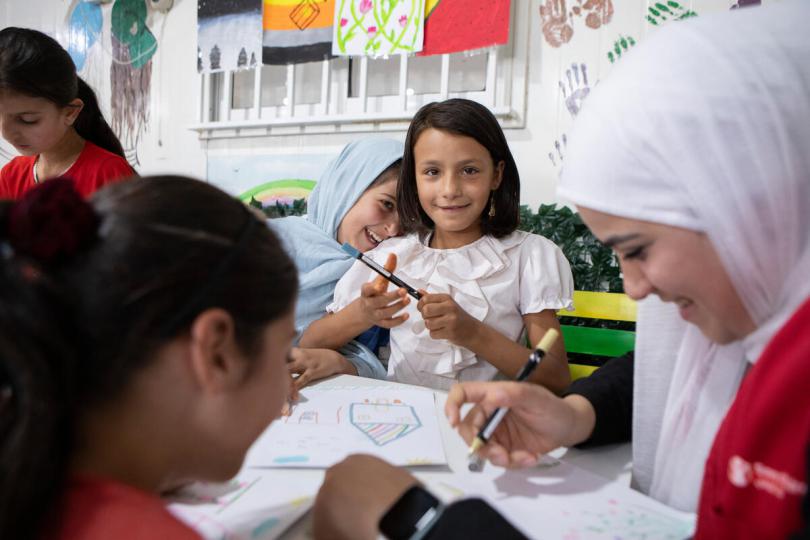
Lina*, 12, drawing at a Girls Empowerment Centre, run by Save the Children, in Zaatari Refugee Camp, Jordan. Kate Stanworth / Save the Children
4. FEWER CHILDREN ARE STUNTED
There has been a drastic reduction in a few decades in stunting - when a child is considered too short for their age because they do not get sufficient or nutritious food in the womb or in early childhood. Since 1990, the prevalence of stunting among children under five worldwide, has fallen from 40% to 22% in 2022 - halving in just over 30 years.
Save the Children has played a role in this progress in places such as the Philippines, where we helped bring about a law to ensure that mothers are given proper nutrition and health care before, during, and after giving birth. The “First 1,000 Days Law”, passed in 2018, helps reduce inequality and malnutrition as it makes sure that all children have access to health and nutrition services from the moment they are conceived up to two years old, known as the “window of opportunity” for every child.
Still, progress is stalling, and levels of hunger globally are now higher than in 2015. [4] Without accelerated progress, by 2030 – the world’s agreed target to meet the UN Sustainable Development Goals - malnutrition will leave more than one in five babies stunted.[5]

A Save the Children nurse checks Abdi's* arm with a MUAC tape to determine his malnutrition level. Mustafa Saeed / Save the Children
5. CHILDREN ARE SPEAKING OUT ABOUT THEIR RIGHTS AND THE CHANGES THEY WANT TO SEE
The old adage that "children should be seen and not heard” has frequently been challenged in recent years. Today, children’s calls for action are beginning to lead policymakers and decision-makers to act on key issues that affect children such as the climate emergency and national rights acts, pushing them up public and political agendas.
Last year, we supported more than 14,200 children across 40 countries to lead and participate in campaigns for a greener and fairer future as part of our Generation Hope campaign. We supported children to raise their voices, share their views, and hold world leaders to account at regional and global forums such as the UN Sustainable Development Goals summit and Conference of Parties (COP).
Supporting children to claim their rights and amplifying children’s voices on the issues that matter to them has been a core tenet of Save the Children’s work with children and communities, but children tell us more needs to be done.
Rachel, 16, a child campaigner who lives in Malawi, a country impacted by the climate crisis, said there needs to be greater spaces for girls’ voices in discussions related to climate change.
“Girls are excluded from decision-making processes related to climate change despite being the most impacted.”
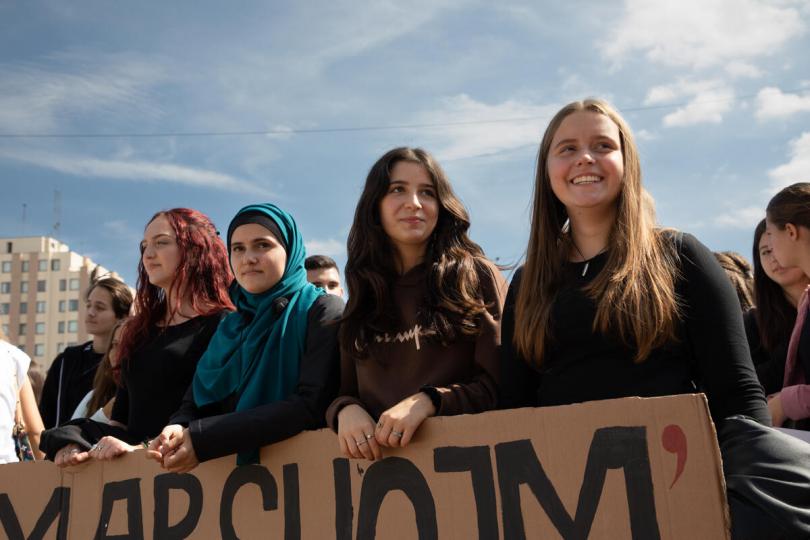
Festina, 16, Sara, 15, More, 14, and Rona, 14, pictured holding a sign at a climate march in Prishtina, Kosovo. Laura Hewison / Save the Children
----
[1] UN Inter-agency Group for Child Mortality Estimation
[2] Save the Children, Racing Against Time, https://resourcecentre.savethechildren.net/pdf/Racing-Against-Time-2024.pdf/
[3] https://www.worldbank.org/en/topic/education/publication/education-for-climate-action
[4] The State of Food Security and Nutrition in the World 2024, https://openknowledge.fao.org/handle/20.500.14283/cd1254en
[5] Save the Children, Racing Against Time, https://resourcecentre.savethechildren.net/pdf/Racing-Against-Time-2024.pdf/
